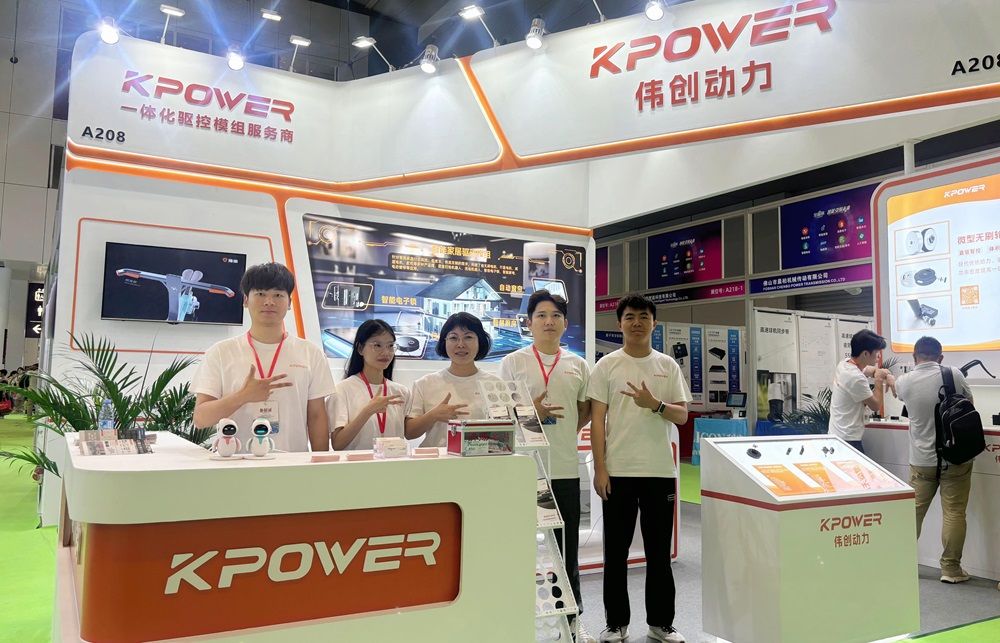Imagine a world where machines not only mimic human movements but surpass them in speed, precision, and endurance. At the heart of this technological marvel lies the humble yet mighty servo motor—an unsung hero powering robotic arms across industries. Whether assembling tiny electronic components or performing complex surgical procedures, the servo motor’s ability to deliver precise motion control transforms possibilities into realities.

The Spark Behind Robotics: Understanding Servo Motors
To appreciate the significance of servo motors in robotic arms, it's essential to understand what a servo motor is. Unlike traditional motors that run continuously at a set speed, servo motors are designed for accurate position control. They consist of a small DC or AC motor coupled with a sophisticated feedback mechanism—usually an encoder or resolver—that constantly monitors the motor’s position. This feedback loop allows the motor to make real-time adjustments, ensuring the robotic arm moves exactly as intended.
Servo motors can be broadly classified into two types: positional and continuous rotation. Positional servo motors excel in applications where precise angle control is paramount—such as robotic arms—while continuous rotation types are used for tasks requiring continuous movement. For robotic arms, positional servos are the backbone, enabling smooth, accurate, and repeatable motions essential in automation and manufacturing.
Precision and Responsiveness: The Backbone of Robotic Manipulation
The strength of a servo motor lies in its ability to deliver high torque at various speeds while maintaining positional accuracy. This power-to-speed balance is critical for robotic arms tasked with delicate assembly or high-stakes operations like surgery or space exploration. The intelligent control algorithms embedded within servo motor drives—often called servo amplifiers or controllers—coordinate torque, speed, and position commands seamlessly.
Imagine a robotic arm tasked with assembling tiny microchips. Even the slightest misalignment could render the entire process useless. Here, the servo motor’s feedback systems help the robotic arm perform with sub-millimeter precision, adjusting its movements as tiny as a few microns. This level of control is unattainable with traditional motors, making servo motors indispensable in high-precision domains.
Components Fuelling Quality Control and Efficiency
The backbone of a servo motor system involves several key components:
Motor Core: Usually a compact DC or AC motor designed for swift response and high torque. Feedback Device: Encoders or resolvers providing real-time positional data. Servo Drive/Controller: The brain of the system, processing inputs and sending commands to the motor. Power Supply: Ensures stable power delivery for consistent performance.
These components work together to form an integrated system capable of executing complex movements with extraordinary accuracy. Moreover, modern servo motors are designed with advanced features such as electronic gearing, adjustable gain settings, and integrated safety protocols, making them adaptable to diverse robotic applications.
Applications Spanning Industries
The versatility of servo motors in robotic arms fuels innovations across multiple sectors:
Manufacturing: Precision assembly lines utilizing robotic arms equipped with servo motors ensure minimal errors, increased productivity, and flexibility to adapt to new products. Healthcare: Robotic surgical systems rely on servo-driven manipulators for delicate procedures, offering enhanced control and minimally invasive operations. Aerospace: Robotic arms with high-precision servo motors execute complex tasks such as spacecraft assembly or satellite maintenance in zero-gravity environments. Research & Development: Robotics labs utilize servo motors to prototype experimental systems that demand accurate motion control under varying conditions.
In all of these instances, the servo motor acts as the critical link, translating digital commands into coordinated and controlled physical actions.
The Role of Control Algorithms and Feedback Systems
While the hardware components form the foundation, the real magic originates from sophisticated control algorithms. Modern servo systems employ techniques such as Proportional-Integral-Derivative (PID) control, Field-Oriented Control (FOC), and advanced adaptive algorithms. These systems analyze feedback data and adjust motor inputs accordingly, maintaining a steady and accurate position even under external disturbances or load variations.
Imagine a robotic arm lifting an object; the servo motor must instantly compensate for the weight shift to prevent wobbling or misalignment. The feedback system detects slight deviations, and the control algorithms tweak the motor’s torque in real time, ensuring the movement remains precise and stable.
Challenges and Innovations
Despite their advantages, servo motors in robotic applications face challenges such as heat dissipation, electromagnetic interference, and the need for meticulous calibration. Addressing these issues has spurred innovations like brushless servo motors, which offer less maintenance and higher efficiency, and integration of smart sensors to further enhance feedback accuracy.
The future points toward more intelligent, self-learning servo systems capable of adapting to changing tasks and environments. Developers are exploring AI-driven control algorithms that can predict and compensate for dynamic factors, ushering in a new era of autonomous and highly adaptable robotic arms.
(This marks the end of Part 1. If you’re ready, I’ll prepare the second part that explores future trends, specific case studies, and tips for selecting the perfect servo motor for your robotic project.)
Kpower has delivered professional drive system solutions to over 500 enterprise clients globally with products covering various fields such as Smart Home Systems, Automatic Electronics, Robotics, Precision Agriculture, Drones, and Industrial Automation.




































